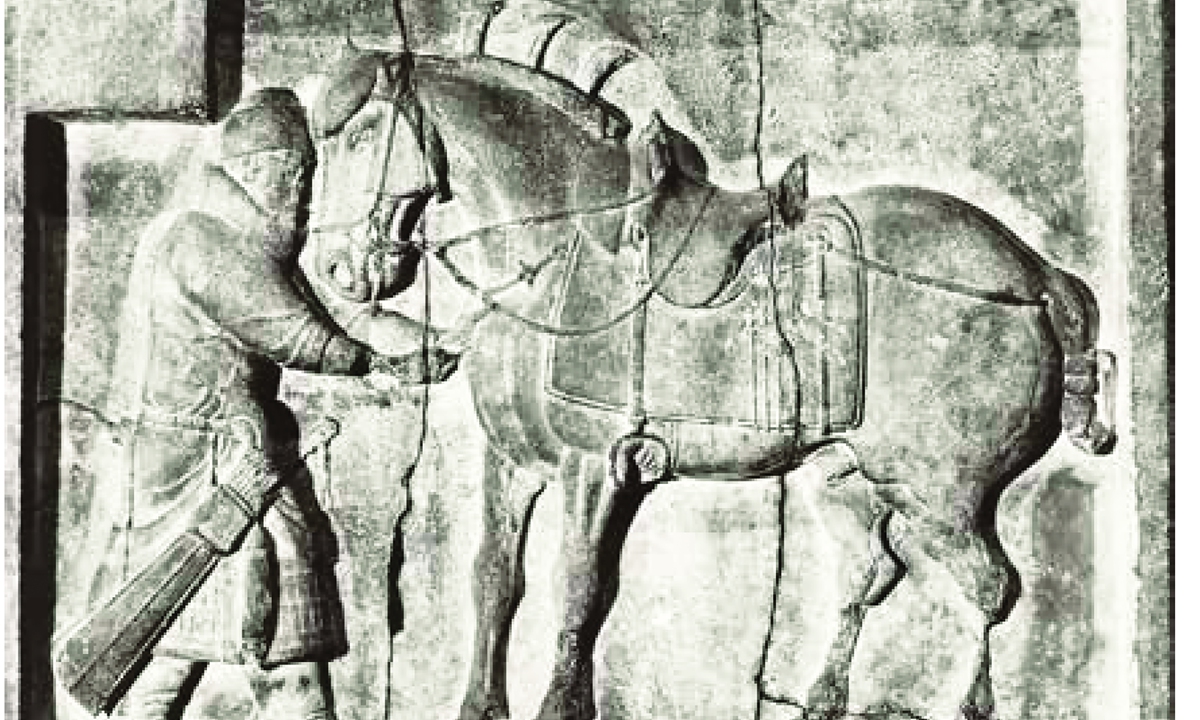Chinese Cultural Relics
Li Li
Treasures Lost in Troubled Times
Precious cultural relics robbed by and lost in foreign countries in about a century were numerous. Most of them are now kept in foreign museums, and some are also in the collections of private connoisseurs (these cultural relics are often unknown to the public).
Many important and well-known cultural relics are in foreign museums.
The Metropolitan Museum of Art in New York, the largest art museum in the US, has a rich collection of Chinese cultural relics such as bronze wares from the Shang (c.1600BC-1046BC) and Zhou (1046BC-221BC) dynasties, and various stone sculptures, wood sculptures, paintings and porcelains ranging from the Northern and Southern Dynasties (386-589) to the Yuan Dynasty (1279-1368).
And the most famous relic is the relief Emperor as Donor with Attendants from the relief sculpture showing the emperor and empress offering to the Buddha in the Longmen Grottoes in Luoyang.
A companion piece, Empress as Donor with Attendants, is now in the Nelson-Atkins Museum of Art.
The University of Pennsylvania Museum of Archaeology and Anthropology, located in Philadelphia, now keeps two horse sculptures from the Zhaoling Mausoleum, the tomb of Emperor Taizong Li Shimin of the Tang Dynasty (618-907).
There were six horse sculptures at the tomb.
The British Museum in Britain has the biggest collection of Chinese cultural relics in Europe.
The most valuable relic in this museum is the painting Admonitions of the Instructress to the Palace Ladies by Gu Kaizhi of the Jin Dynasty (265-420).

Li Li
Treasures Lost in Troubled Times
Precious cultural relics robbed by and lost in foreign countries in about a century were numerous. Most of them are now kept in foreign museums, and some are also in the collections of private connoisseurs (these cultural relics are often unknown to the public).
Many important and well-known cultural relics are in foreign museums.
The Metropolitan Museum of Art in New York, the largest art museum in the US, has a rich collection of Chinese cultural relics such as bronze wares from the Shang (c.1600BC-1046BC) and Zhou (1046BC-221BC) dynasties, and various stone sculptures, wood sculptures, paintings and porcelains ranging from the Northern and Southern Dynasties (386-589) to the Yuan Dynasty (1279-1368).
And the most famous relic is the relief Emperor as Donor with Attendants from the relief sculpture showing the emperor and empress offering to the Buddha in the Longmen Grottoes in Luoyang.
A companion piece, Empress as Donor with Attendants, is now in the Nelson-Atkins Museum of Art.
The University of Pennsylvania Museum of Archaeology and Anthropology, located in Philadelphia, now keeps two horse sculptures from the Zhaoling Mausoleum, the tomb of Emperor Taizong Li Shimin of the Tang Dynasty (618-907).
There were six horse sculptures at the tomb.
The British Museum in Britain has the biggest collection of Chinese cultural relics in Europe.
The most valuable relic in this museum is the painting Admonitions of the Instructress to the Palace Ladies by Gu Kaizhi of the Jin Dynasty (265-420).

Silk painting of The Amitabha, unearthed from the Dunhuang Mogao Caves, collected by the British Museum Photo: Courtesy of the China Intercontinental Press

